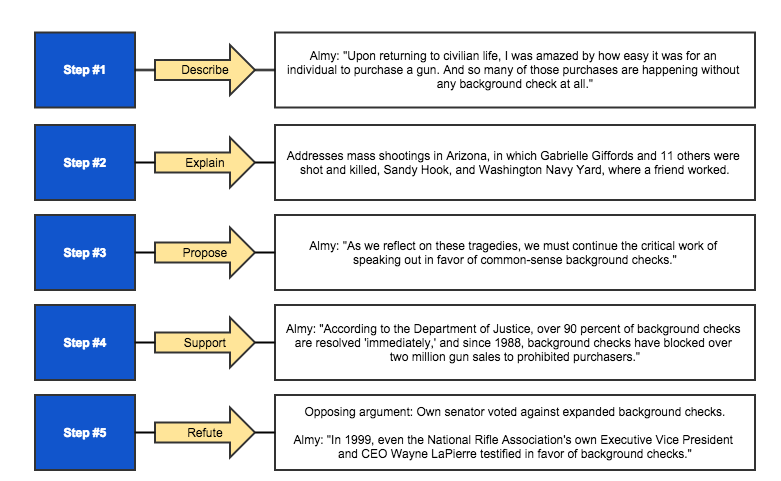If you follow the news, you might think that the world has lost its mind. So many problems and so few solutions. Why bother?
Yet people are offering solutions to these problems. You might have read some of them in op-eds, policy papers, office memos, or problem-solution essays. Writing a good problem-solution essay is a necessary skill, not only for your career but for your civic-life as well.
In this blog post, I’ll show you how to write a problem-solution essay that will effectively present your point of view and exercise your troubleshooting skills.
Key Elements to Writing a Problem-Solution Essay
First off, a problem-solution essay has two goals:
- convince readers that there is a problem
and - that there are solutions to fix it
This might sound simple enough, but opponents who read a problem-solution essay might not think there is a problem at all, much less that anything should be done about it.
You have to break through those barriers and make a convincing argument. Five key elements to writing a problem-solution essay include those that keep your audience in mind.
#1 Your topic has to describe a problem with a viable solution
When choosing a topic, you need to select a problem that has a viable solution. Or, to put it another way, you want a solution that has clear and objective goals. For instance, war is a major problem, but you’d be pressing your luck if you think you can convince readers that you’ve found the answers to creating world peace.
However, topics like gun violence or sexual assaults on college campuses are more viable. Solutions to these problems can be enacted through policy or social change. The more specific a problem, the more likely it will have a clear and specific solution.
Once you’ve chosen a topic, describe the problem in detail. This can be done either through facts or recent events in the news say, for instance, a mass shooting, the release of an important study, or a bill going through Congress. You can also use your personal experience or the experiences of people you know as a descriptive introduction to the problem.
#2 Explain why the problem needs to be solved
A problem-solution essay, like a director on a movie set, demands action. You want readers to recognize the urgency of the problem and why it needs to be solved.
Show specific examples of how the problem affects individuals or communities, either through personal experiences or through facts. For instance, in an essay arguing for stricter gun control laws, the author might discuss the long-term effects of gun violence on an individual or a community.
Addressing the consequences of a problem if it remains unsolved is also an effective way to convince readers. Another example: “Studies show that access to a firearm in the home increases the chances for accidental shootings.”
Don’t be maudlin or manipulative. For instance, telling readers that they’re to blame if they do nothing to solve the problem is a sure-fire way to lose readers. Respect your audience, even those with whom you disagree, and simply stick to the facts.
#3 Propose a solution
Once you’ve made a convincing argument that there is a problem, you need to propose a solution. There’s no point in bringing up a problem without suggesting ideas on how to solve it. In other words: Don’t be a Debbie Downer!
The solution should be one that can be carried out through specific, effective goals such as enacting a policy, passing a law, launching a campaign, or employing simple, actionable measures.
For example, “Guns should be outlawed,” is a broad statement and doesn’t present an actual goal that readers can enact. However, the statement, “The government must pass stricter gun control laws on semiautomatic assault weapons,” is a good example of a viable solution because it sets a clear goal (“passing a law”) with a clear purpose (“stricter controls on the sale of semiautomatic assault weapons”).
#4 Your solution should be supported by facts
A convincing argument for any solution has to be supported by facts. A statement like, “I think gun control laws should be stricter because only sickos want guns,” is an opinion that is not supportable by facts.
However, you can make a stronger case by using statistics or studies to bolster your claims. For instance, an author can make a convincing argument by comparing and contrasting statistics on the rates of gun-related deaths in states that have strict gun control laws with states whose laws are more permissive.
#5 Refute opposing arguments
By acknowledging and refuting other arguments or solutions, you will make a stronger argument about why your solution is the most effective.
An author might add, “While addressing the causes that lead to mass shootings is important, this still does not account for the number of suicides and accidental deaths caused by firearms. According to Centers for Disease Control and Prevention, ‘suicides by gun accounted for about six of every 10 firearm deaths in 2010 and just over half of all suicides.’”
Refuting opposing arguments allows you to answer the questions and doubts readers might have about the solutions you propose and sway them toward your position.
Now Let’s Break Down a Real Problem-Solution Essay
So now that you know the key elements that make a great problem-solution essay, let’s look at how those elements are actually applied in a real essay.
In this op-ed written by Michael Almy, a guest-columnist for Cleveland.com, a compelling and personal argument is made in favor of gun control through background checks. He applies many of the key elements I mentioned above in an effective way. I’ve created this graph to summarize his points: 
I’d have a hard time arguing against Almy’s case because he proposes a viable solution and uses facts to bolster it in a clear and direct way.
You might have noticed that Almy begins his essay with a personal narrative. This is fine as long as you include the five key elements to a problem-solution essay. However, the traditional 5-paragraph essay structure is a tried-and-true format for all college writing and one that I recommend using.
Final Thoughts on the Problem-Solution Essay
As you can see, the problem-solution essay is pretty simple once you know its basic elements. But if you need additional help, read How to Write a Good Essay: Stop Summarizing, Start Commentating, which offers tips on how to write a polished, well-argued essay with a strong point of view.
I also recommend reading Chris Peterson’s informative blog post. Though he writes about college admission essays, he offers sound advice that is true for all essay writing.
If you need any more inspiration, browse these examples for topic ideas.
Finally, once you’re finished with the first draft, make sure it’s edited and polished to make a greater impact on readers.
By following these basic rules, you’ll be able to write a compelling problem-solution essay that might actually make a difference.
Good luck and have fun!



